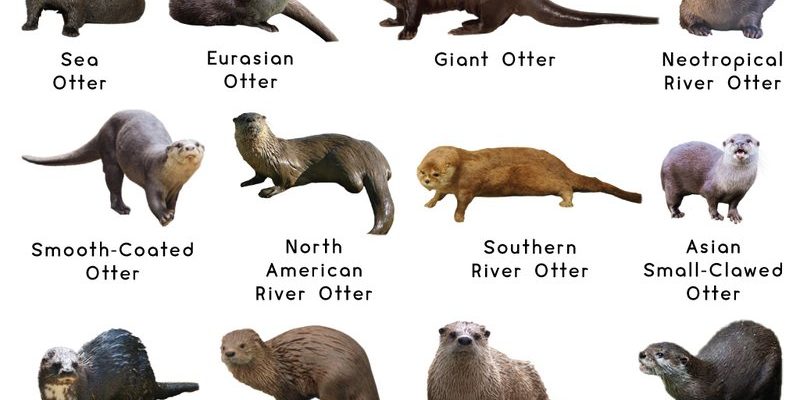![Comparing The Sea Otter Vs. [Similar Species]](https://gudri.com/wp-content/uploads/2025/06/Comparing_The_Sea_Otter_Vs___Similar_Species__image_0.jpg)
So, what’s the deal between these two fascinating animals? It’s like comparing apples to oranges—both fruity but with different tastes, textures, and habitats. Let’s dive a little deeper and explore how these two otters stack up against each other in various aspects, from their physical characteristics to their behaviors and habitats.
Physical Differences: Sea Otters vs. River Otters
When you look at sea otters, their thick, water-resistant fur is often the first thing that catches your eye. In fact, it’s the densest fur of any animal on Earth! This fur isn’t just for show; it keeps them warm in chilly ocean waters. Sea otters can weigh anywhere from 50 to 100 pounds, and they have slightly larger bodies that are built for a marine lifestyle. Their short legs and webbed feet help them navigate through the water with ease.
On the other hand, river otters are smaller and more slender, typically weighing 50 pounds or less. They have longer legs, which makes them nimble on land. Their fur is also soft and dense, but it’s not as thick as that of sea otters. This gives them an edge when they’re darting in and out of rivers and streams. So, if you ever get a chance to spot both species in their natural habitats, their size and shape will help you tell them apart right away.
Habitat: Where Do They Call Home?
The sea otter is often found along the coastlines of the Pacific Ocean, where kelp forests thrive. They are commonly spotted in places like California and Alaska, where the waters are rich in food sources. These otters are often seen floating in groups called rafts, sometimes with their young ones nestled on their bellies. It’s a pretty adorable sight, as they keep their young close and use tools to crack open their meals.
In contrast, river otters prefer freshwater habitats like rivers, lakes, and marshes. They can be found all over North America, from the eastern to the western parts of the continent. River otters often live in small family groups and are known for their energetic playfulness on land. They’re acrobatic swimmers, using their long bodies to glide through the water as they hunt for fish, frogs, and crustaceans.
Diet: What Do They Eat?
When it comes to food, both otters have a varied diet but focus on different types of prey. Sea otters primarily feast on marine life. Their favorites include sea urchins, crabs, clams, and fish. Because they have such a high metabolism, sea otters need to eat a lot—up to 25% of their body weight daily! Imagine munching on a hefty feast of clams and crabs just to keep your energy up!
River otters, on the other hand, have a more diverse diet that includes fish, amphibians, and even small mammals. They can be quite the opportunistic eaters, adjusting their meals based on what’s readily available in their freshwater environments. Their hunting style is energetic, often involving a chase through the water or a playful splash as they catch their meal.
Behavior: How Do They Play?
Both sea and river otters are known for their playful antics, but they express this playfulness differently. Sea otters often play together in rafts, floating on their backs, and even holding hands while they snooze. Can you imagine? It’s a cozy scene that showcases their social nature. They also use tools, like rocks or shells, to open their shells—an impressive skill that showcases their intelligence.
River otters are no less playful; they can often be seen sliding down muddy banks or playing tag in the water. Their agile movements and curiosity lead them to explore their surroundings frequently. They’re highly social animals, often seen engaging with one another in their families. Their playfulness isn’t just for fun; it helps strengthen social bonds and even teaches their young how to hunt.
Conservation Status: How Are They Doing?
Both sea and river otters faced significant challenges in the past due to habitat loss and hunting. Sea otters, once nearly hunted to extinction for their fur, have made a comeback thanks to conservation efforts, but they still face threats from oil spills, climate change, and declining prey. They’re currently listed as a threatened species in many regions, meaning ongoing protection is crucial.
River otters have a more stable population and are currently classified as least concern. However, they still encounter challenges like pollution in their freshwater habitats and loss of wetland areas. Local conservation programs have been beneficial in keeping river otter populations healthy and thriving.
When comparing sea otters and river otters, you’re looking at two delightful and intelligent creatures that have adapted to their unique environments. Their physical differences, habitats, diets, and behaviors all reflect the fascinating ways they connect with nature. Whether lounging in the ocean or splashing in a river, both species remind us of the beauty and diversity of life on our planet.
So next time you spot an otter—whether it’s floating in the ocean or frolicking in a stream—take a moment to appreciate these incredible animals. They may be cute and playful, but they also play a vital role in their ecosystems. By understanding and protecting them, we can ensure that future generations will also enjoy the charm of otters in the wild.

